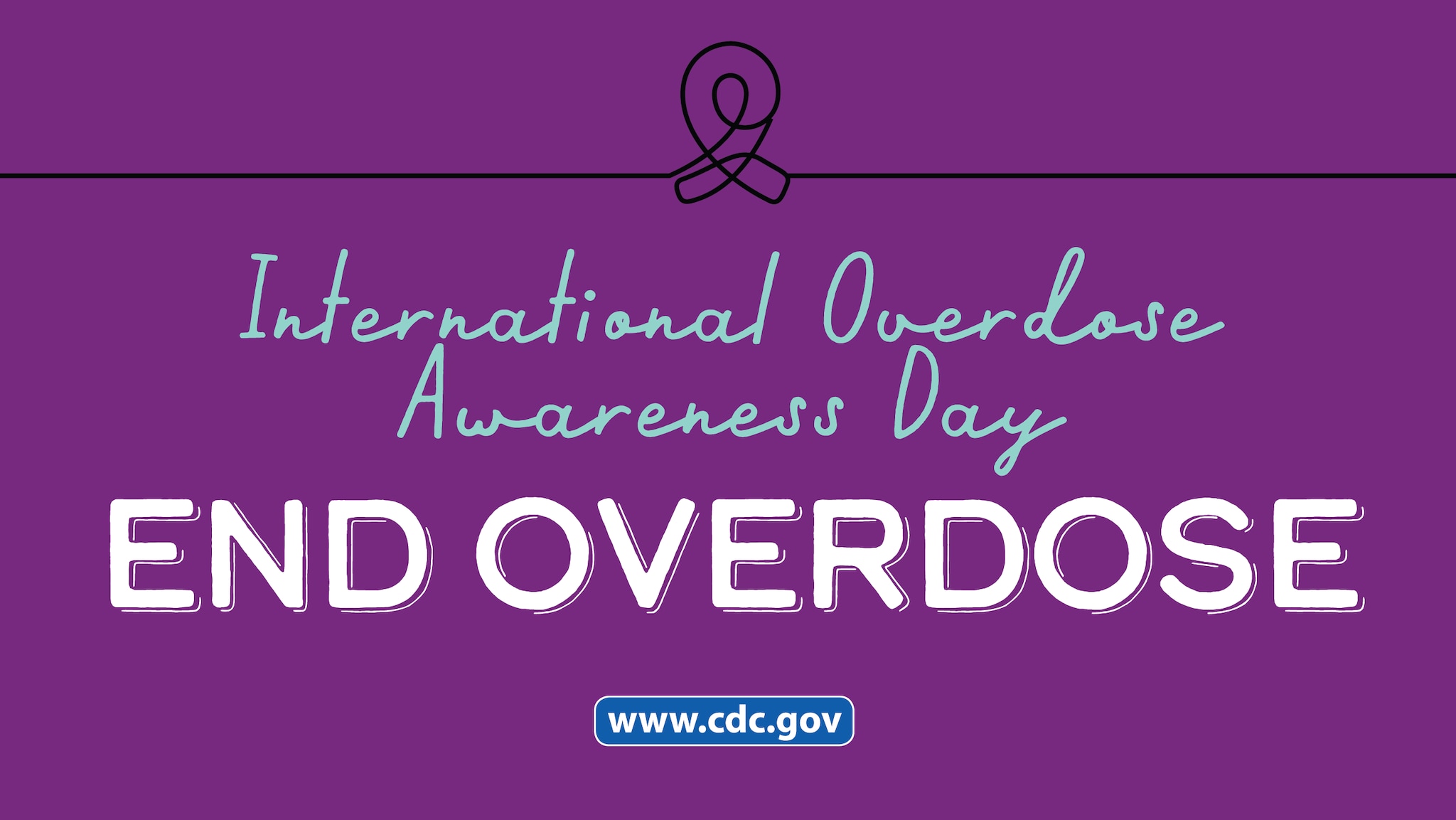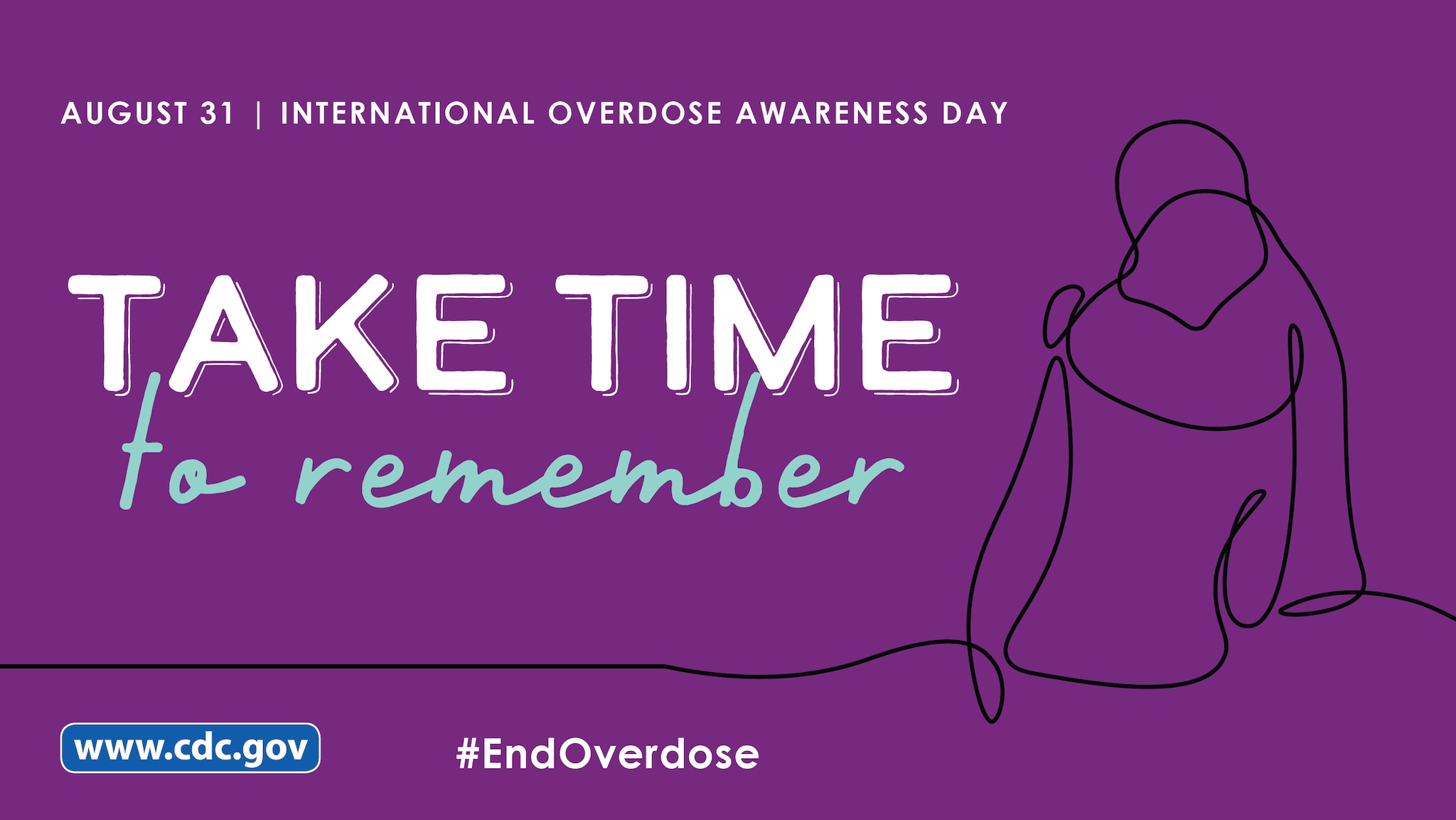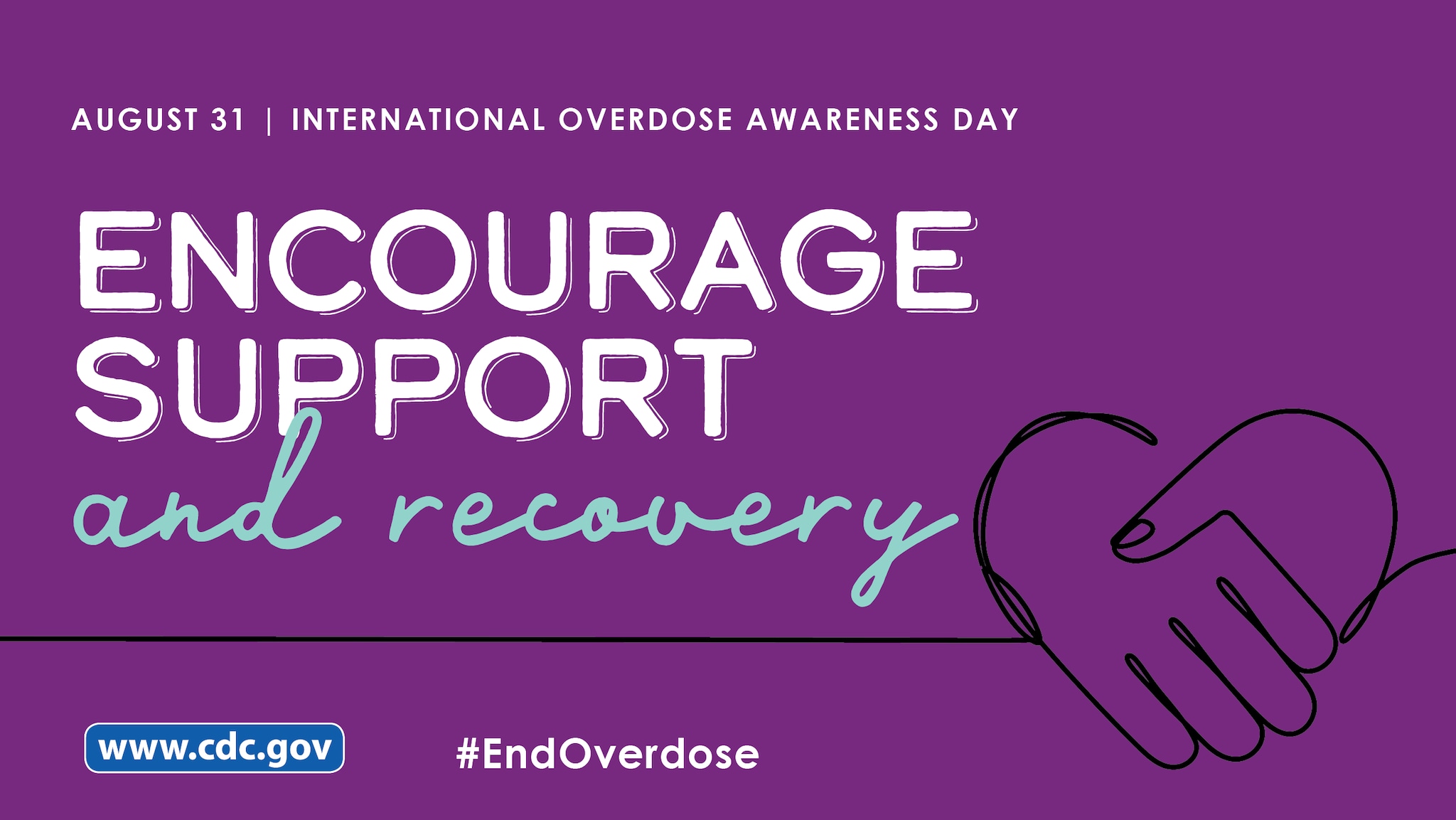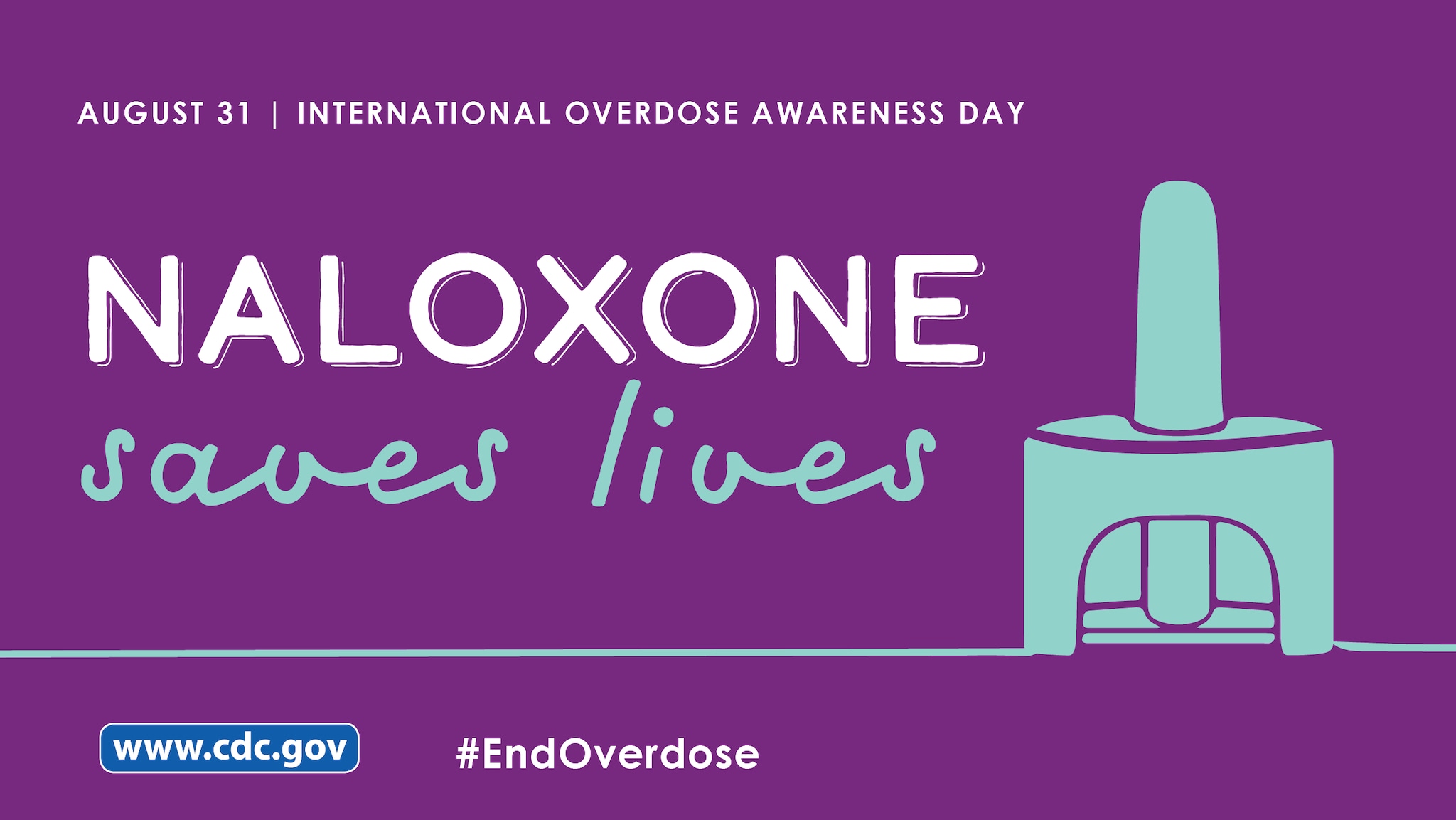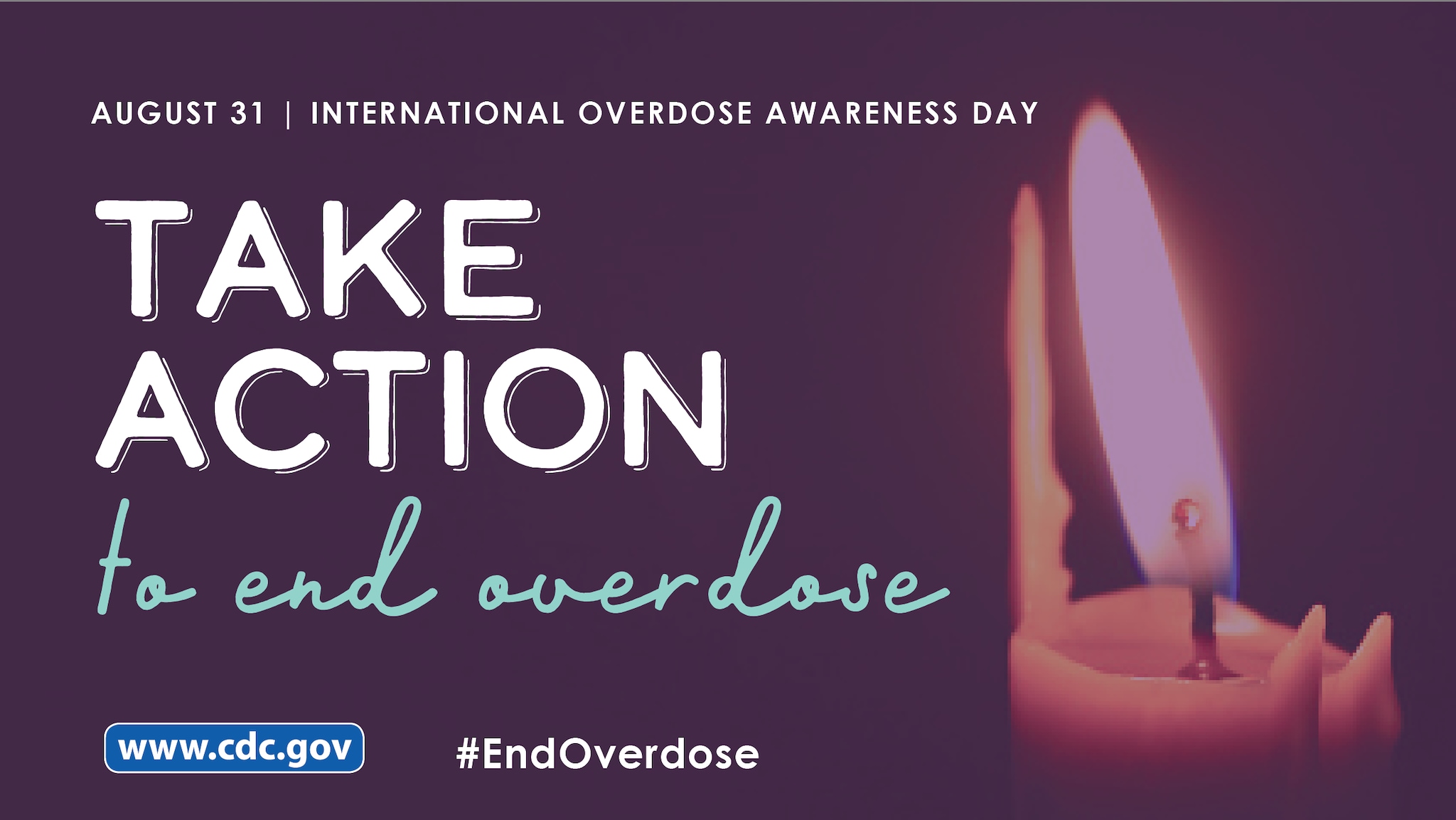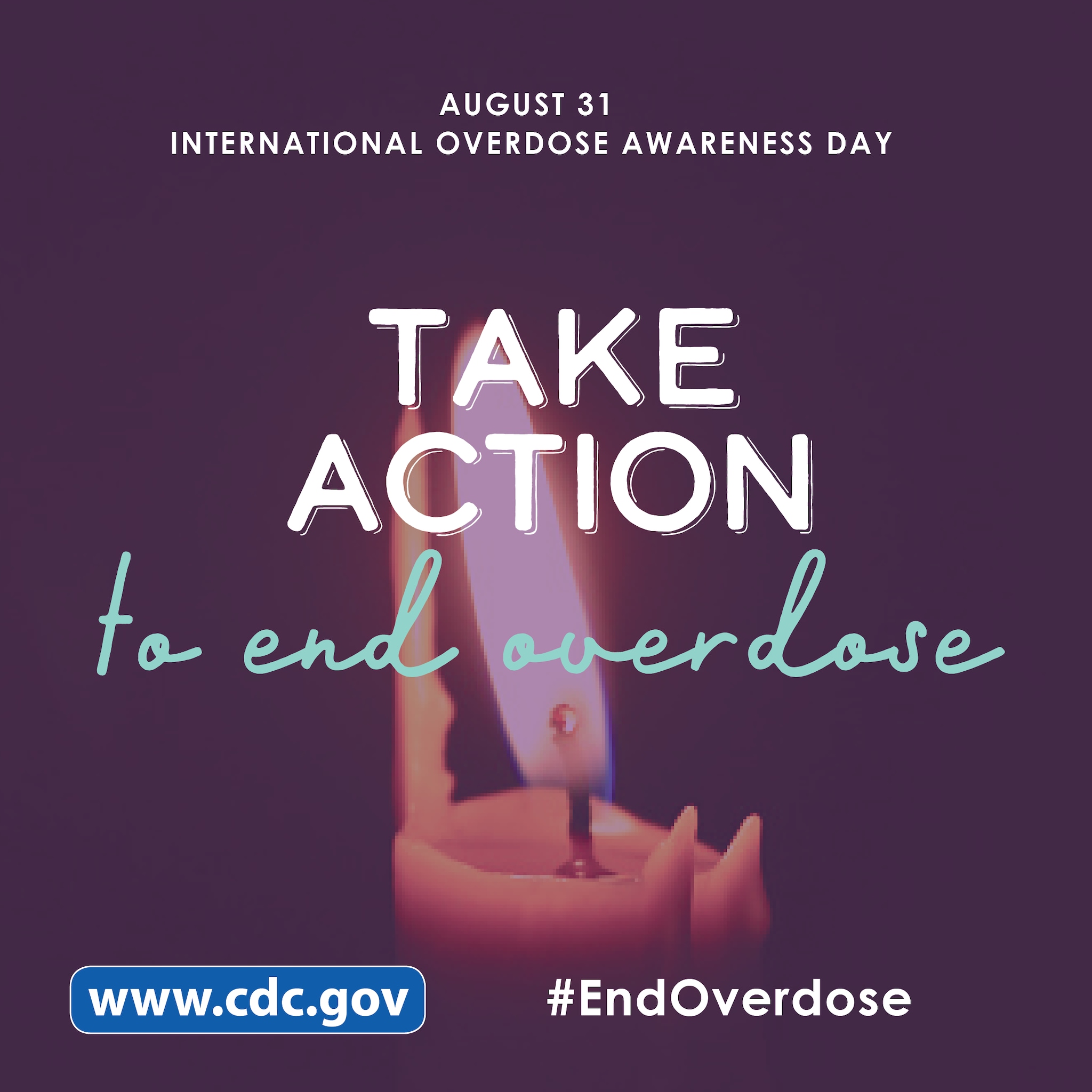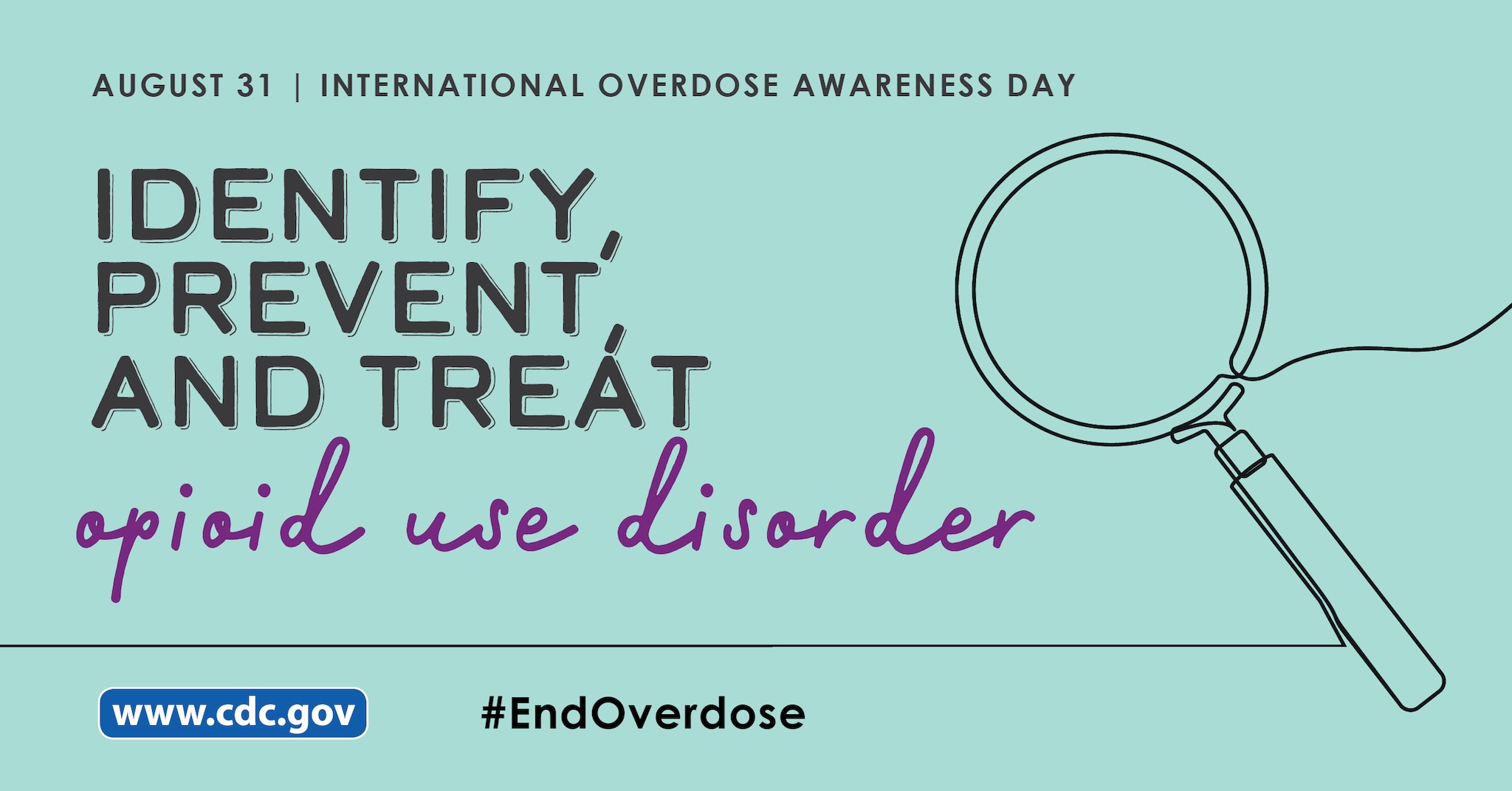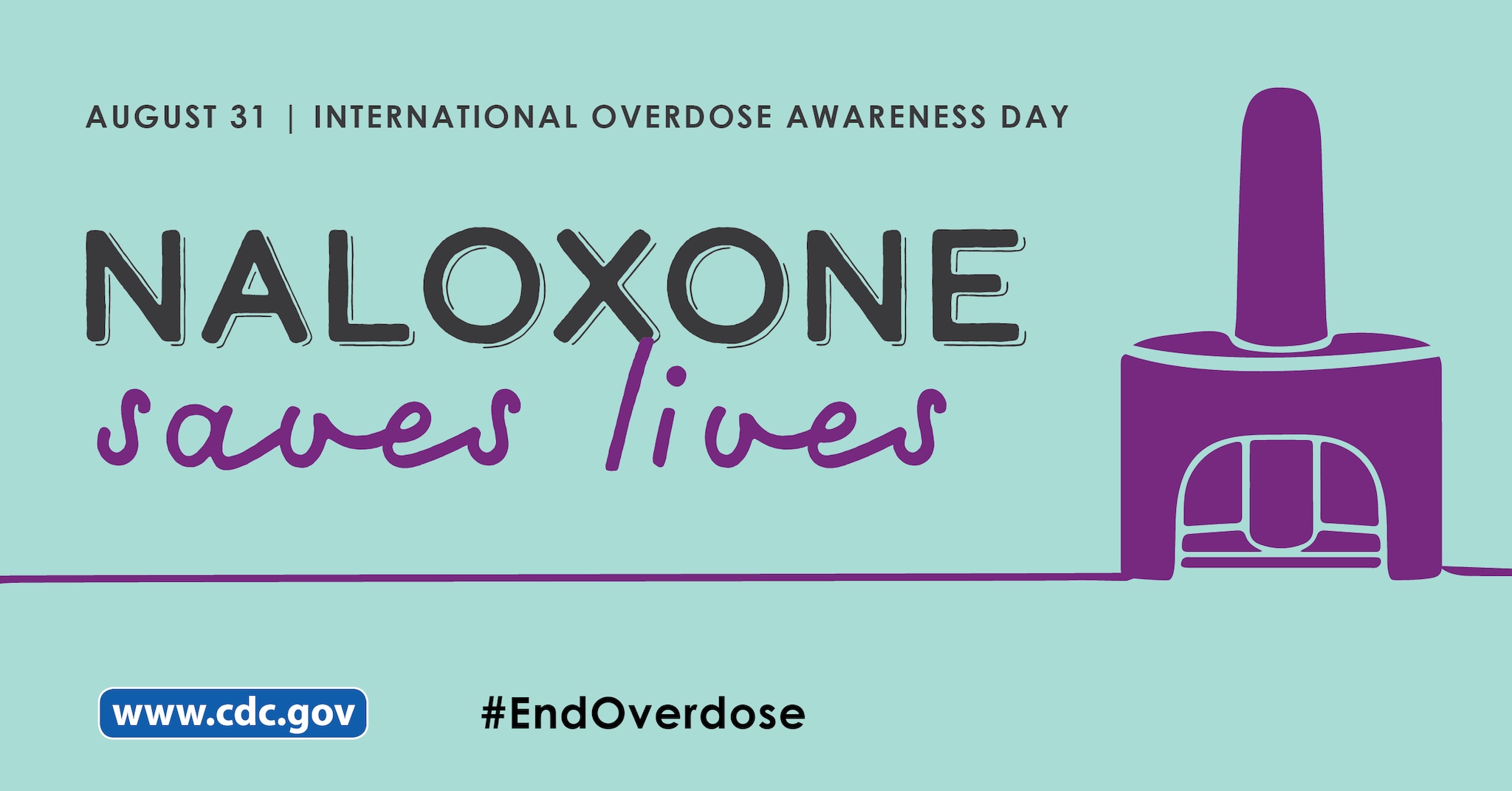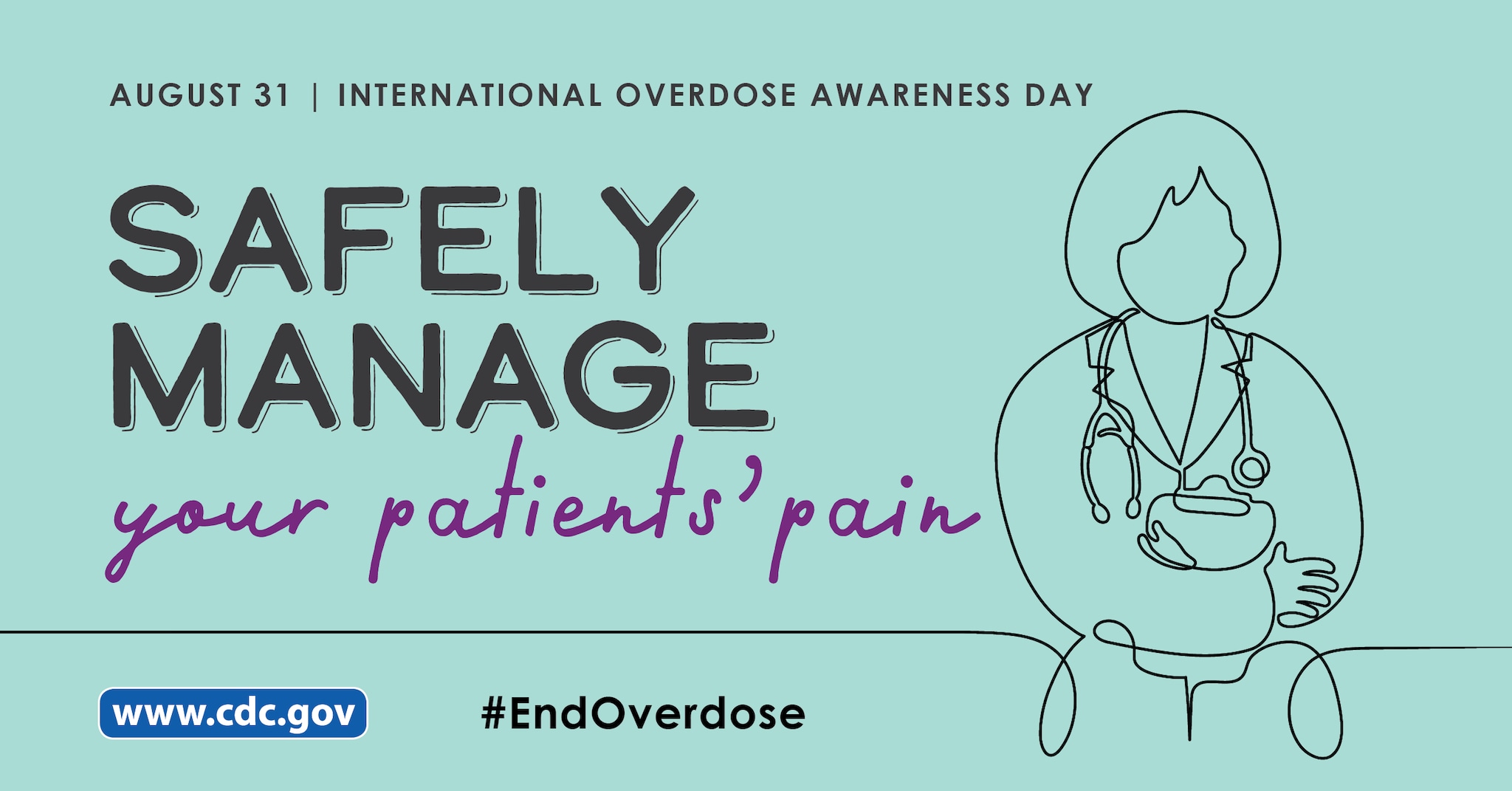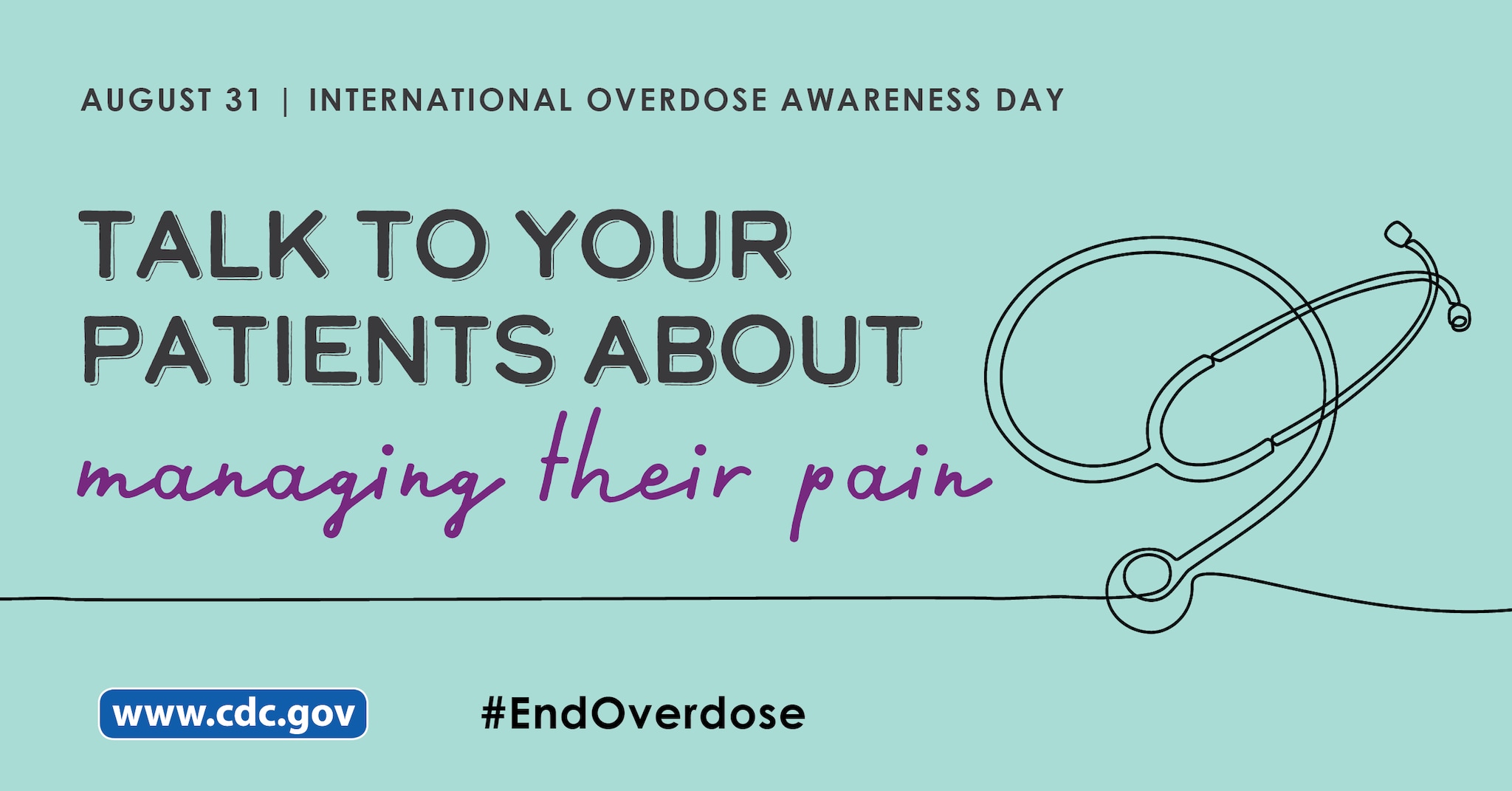International Overdose Awareness Day Partner Toolkit
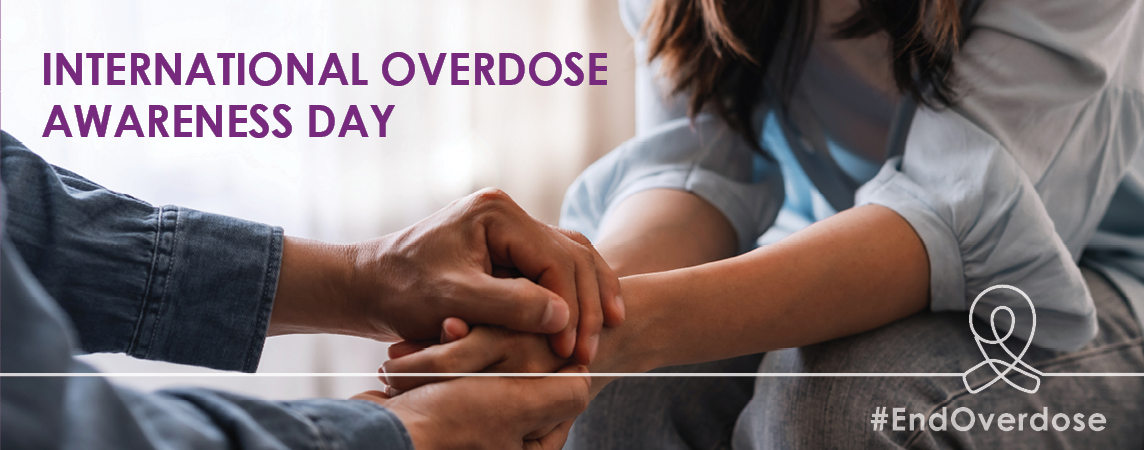
August 31 marks International Overdose Awareness Day (IOAD), the world’s largest annual campaign to end overdose. It’s a day to:
- Remember loved ones who have died from drug overdose and acknowledge the grief of the family and friends left behind.
- Take action to encourage support and recovery for everyone impacted by substance use and overdose.
- End overdose by spreading awareness of overdose prevention strategies.
Hashtags: #IOAD2023 #EndOverdose
Partner With Us
Join us as an IOAD partner by using your voice and platforms to spread the message of ending overdose. This partner toolkit provides free resources, including key IOAD messages, social media content, and patient and provider educational materials, to spread the word about ending overdose. In addition to this toolkit, a campaign resources overview provides a list of materials available for download and print.
You can inform others of what can be done to end overdose by sharing these IOAD resources with your friends, family, and colleagues. Examples of how to get involved include:
- Posting IOAD messages and using the hashtag #IOAD2023 and #EndOverdose on social media.
- Sharing IOAD digital content, web features, and materials online.
- Using the sample articles to share IOAD information with communities and healthcare providers in newsletters, emails, and other partner communications.
- Downloading free educational materials and participating in interactive trainings for patients and healthcare providers.
- Educating communities at risk and healthcare providers at meetings, health fairs, conferences, and other events.
Key Messages
International Overdose Awareness Day is the world’s largest annual campaign to end overdose.
The goals of International Overdose Awareness Day are:
- To provide an opportunity for people to publicly mourn loved ones.
- To send a strong message to people who use drugs and people in recovery that they are valued.
- To inform people around the world about the risk of drug overdose.
- To provide basic information on the range of support services that are available.
- To prevent and reduce drug-related harms by supporting evidence-based practice.
For General Audiences and Media
This August, CDC’s Division of Overdose Prevention in the National Center for Injury Prevention and Control is marking IOAD with the release of a new report, showing counterfeit pill availability is increasing in the U.S.
- A new study indicates an increasing percentage of overdose deaths are related to counterfeit pill use. These pills are especially dangerous because they typically appear as pharmaceutical pills but often contain illegally made fentanyl and illegal benzodiazepines or other drugs, with or without people’s knowledge.
- Researchers found that among 29 states and the District of Columbia (DC), the percentage of overdose deaths involving counterfeit pills more than doubled from July–September 2019 (2.0%) to October–December 2021 (4.7%), and more than tripled in the West (4.7% to 14.7%).
- The report also found that in 2021, people who died from overdoses involving counterfeit pills were more often under the age of 35 and Hispanic, compared to those without counterfeit pill evidence.
How to recognize an overdose
Recognizing an overdose can be difficult. If you aren’t sure, it is best to treat the situation like an overdose—you could save a life. Call 911 immediately. Administer naloxone, if it’s available. Do not leave the person alone. Signs of an overdose may include:
- Small, constricted “pinpoint pupils”
- Falling asleep or loss of consciousness
- Slow, weak, or no breathing
- Choking or gurgling sounds
- Limp body
- Cold and/or clammy skin
- Discolored skin (especially in lips and nails)
Lifesaving naloxone
Naloxone can reverse an overdose from opioids, including heroin, illicitly manufactured fentanyl and fentanyl analogs, and prescription opioid medications. Often given as a nasal spray, naloxone is safe and easy to use.
You should carry naloxone if
- You or someone you know is at increased risk for opioid overdose, especially those with opioid use disorder (OUD).
- You or someone you know are taking high-dose opioid medications prescribed by a doctor.
- You or someone you know have both opioid and benzodiazepines prescriptionsor use illicit substances like heroin or fentanyl.
Remember: You can’t use naloxone on yourself. Let others know you have it in case you experience an opioid overdose.
For Healthcare Professionals
CDC’s naloxone resources for healthcare professionals are designed to provide an overview of naloxone, a critical component of the public health response to the opioid overdose epidemic, and provide strategies that can be implemented in your practice.
Studies show that naloxone may not always be offered when risk factors are present, such as taking higher doses of opioids, prescriptions for benzodiazepines in addition to opioids, or history of overdose.
Clinician’s roles
As a healthcare professional, you can reduce risks of overdose deaths by
- Educating patients and their caregivers on factors that increase the risk for overdose.
- Raising awareness about the benefits and availability of naloxone.
- Encouraging patients who are at risk and their caregivers to carry naloxone.
- Explaining how and when to administer naloxone.
- Highlighting the importance of follow-up care for overdose.
What is available?
CDC created a suite of naloxone materials and tools to support your efforts to discuss naloxone with patients. These tools can help clinicians inform patients, families, and/or caregivers about the value of naloxone in a non-stigmatizing manner.
- Factsheets and Conversation Starters Information on naloxone for a variety of audiences ranging from clinicians to patients.
- Naloxone Training Includes modules that are eligible for free continuing education and interactive patient cases.
- An Addiction Medicine Toolkit is also available to support clinicians who are working with their patients to treat or manage substance use disorder or opioid use disorder.
CDC recently released the 2022 CDC Clinical Practice Guideline for Prescribing Opioids for Pain. CDC developed resources and trainings for healthcare professionals to assist with implementing the guidance in their practices. We continuously develop materials so please check back periodically to see what is new.
Use our suggested X (Twitter), Facebook, Instagram, and LinkedIn copy to spread the word. Schedule content to remind your networks about International Overdose Awareness Day.
Use #IOAD2023 and #EndOverdose to join the conversation and tag us at @CDCInjury on X (Twitter)! Additional graphics are available in campaign resources.
For General Audiences
X (Twitter) Posts
International Overdose Awareness Day (August 31) is right around the corner. Use CDC resources to learn more about the drug overdose crisis and how you can help save lives: https://www.cdc.gov/drugoverdose/awareness/ioad.html
#IOAD2023
#EndOverdose
Aug 31 marks International Overdose Awareness Day (IOAD), a day to remember those lost to #overdose, acknowledge the grief of loved ones left behind, and work to #EndOverdose injury & death.
Learn more about overdose’s impact: https://www.cdc.gov/rxawareness/index.html
#IOAD2023
International Overdose Awareness Day (Aug 31) is next week.
Join us in remembering those we’ve lost from drug #overdose, encouraging substance use disorder support & recovery, and working to #EndOverdose by learning & sharing prevention strategies: https://www.cdc.gov/stopoverdose/index.html
#Naloxone is a lifesaving medication that can reverse an opioid #overdose. This International Overdose Awareness Day, help protect your loved ones from a fatal overdose by keeping lifesaving naloxone with you & at home. Learn more: https://www.cdc.gov/stopoverdose/naloxone/index.html
#EndOverdose
#IOAD2023
Facebook Posts
More than 105k American lives were lost to drug overdose in 2022.
On this International Overdose Awareness Day, we:
- Remember those we’ve lost from drug overdose
- Encourage substance use disorder support and recovery
- Continue the fight to end overdose by sharing prevention strategies
Learn more about how to stop overdose and save lives: https://www.cdc.gov/stopoverdose/index.html
Instagram Post
More than 105k Americans were lost to drug overdose in 2022.
On this International Overdose Awareness Day, join us in remembering those we’ve lost, encouraging substance use disorder support & recovery, and working to end overdose by sharing prevention strategies.
Click the link in our bio to learn how to stop overdose and save lives.
#IOAD2023
#EndOverdose
https://www.cdc.gov/stopoverdose/index.html*
*Add the suggested link to your bio. You can also make this into an Instagram Story and directly add the link there.
For Healthcare Professionals
X (Twitter) Posts
Clinicians: August 31 is International Overdose Awareness Day. Learn how CDC’s resources can help you identify, prevent, and treat opioid use disorder. More: https://www.cdc.gov/opioids/healthcare-professionals/prescribing/opioid-use-disorder.html
#IOAD2023
Clinicians: Naloxone is a lifesaving medication that can reverse an opioid overdose when given in time. This International Overdose Awareness Day, learn how CDC’s resources can help you promote the benefits of naloxone: https://www.cdc.gov/opioids/naloxone/index.html
#IOAD2023
Facebook Posts
Tomorrow is International Overdose Awareness Day (IOAD). Clinicians, check out CDC’s resources on prescription opioids and learn how they can support you in safely managing patients’ pain and reducing prescription opioid misuse: https://www.cdc.gov/opioids/healthcare-professionals/index.html
Clinicians: We know that you put your patients’ overall health and safety first. If you prescribe opioids for pain, consider also prescribing naloxone.
Naloxone is a lifesaving medication that can reverse an opioid overdose when given in time. Ahead of International Overdose Awareness Day on August 31, learn how CDC’s resources can help you promote the benefits of naloxone and get it in the hands of those who need it most. For more information visit: https://www.cdc.gov/opioids/naloxone/index.html
LinkedIn Posts
August 31 is International Overdose Awareness Day (IOAD). Clinicians, check out CDC’s resources on prescription opioids and learn how they can support you in safely managing patients’ pain and reducing prescription opioid misuse: https://www.cdc.gov/opioids/healthcare-professionals/index.html
Clinicians: August 31 is International Overdose Awareness Day. On this day, encourage your colleagues to work collaboratively with patients when treating substance use disorders (SUDs). CDC’s Addiction Medicine Toolkit includes conversation starters and other strategies to help you treat patients with SUDs safely and effectively. Explore the Toolkit: https://www.cdc.gov/opioids/addiction-medicine/index.html
Clinicians: We know that you put your patients’ overall health and safety first. If you prescribe opioids for pain, consider also prescribing naloxone.
Naloxone is a lifesaving medication that can reverse an opioid overdose when given in time. Ahead of International Overdose Awareness Day on August 31, learn how CDC’s resources can help you promote the benefits of naloxone and get it in the hands of those who need it most. For more information visit: https://www.cdc.gov/opioids/naloxone/index.html
Include our sample content in email or print newsletters or other communications channels, including updates to staff, provider networks, associations, and community-based communications efforts.
For General Audiences
Subject Line: CDC Marks International Overdose Awareness Day with New Research on Overdose Deaths Involving Counterfeit Pills
Title: Time to remember. Time to act.
August 31 marks International Overdose Awareness Day (IOAD), the world’s largest annual campaign to end overdose. This is a day for us to remember those who have died from drug overdose and acknowledge the grief of the family and friends left behind. We encourage you to use this occasion to raise awareness and to help spread the hope of recovery and to end overdose.
This year for IOAD, CDC’s Division of Overdose Prevention in the National Center for Injury Prevention and Control will release a new Morbidity and Mortality Weekly Report (MMWR), “Drug Overdose Deaths with Evidence of Counterfeit Pill Use — United States, July 2019–December 2021,” showing counterfeit pill use is increasingly identified in drug overdose deaths in the U.S.
Drug overdoses are preventable. People can help reduce the risk of overdose involving counterfeit pills by:
- Only taking pills prescribed to them
- Being aware that pills bought illegally might contain highly potent drugs
- Using fentanyl test strips (FTS), small strips of paper that can detect the presence of fentanyl in all different kinds of drugs (cocaine, methamphetamine, heroin, etc.) and drug forms (pills, powder, and injectables)
You can make an impact by sharing our overdose prevention work and resources with colleagues, partners, and loved ones this International Overdose Awareness Day. We invite you to help share our message that drug overdose is preventable. Help us spread this message on social media with the sample posts in our Partner Toolkit.
For Healthcare Professionals
International Overdose Awareness Day (IOAD), held annually on August 31, is the world’s largest annual campaign to end overdose. This is a day for us to remember those who have died from drug overdose and recognize those family and friends whose lives have been impacted by overdose. We encourage you to use the occasion of IOAD to raise awareness and take action to end overdose. Visit our website for the latest: https://www.cdc.gov/drugoverdose/index.html.
In recent years, the U.S. has seen increases in the presence of counterfeit pills in the illegal drug market; these pills are dangerous because they often contain highly potent illegally made fentanyl (IMFs) or other illegal drugs with or without a person’s knowledge, increasing the risk of overdose. In 2022, over 105,000 people were estimated to have lost their lives to drug overdose. This year for IOAD, CDC’s Division of Overdose Prevention in the National Center for Injury Prevention and Control released a new Morbidity and Mortality Weekly Report (MMWR), “Drug Overdose Deaths with Evidence of Counterfeit Pill Use — United States, July 2019–December 2021.”
Researchers found that among 29 states and the District of Columbia (DC), the percentage of overdose deaths involving counterfeit pills more than doubled from July–September 2019 (2.0%) to October–December 2021 (4.7%), and more than tripled in the West (4.7% to 14.7%). The report also found that in 2021, people who died from overdoses involving counterfeit pills were more often under the age of 35, and Hispanic, compared to those without counterfeit pill evidence.
Recent increases in the availability of counterfeit pills containing IMFs and other illegal drugs highlight the need for expanded education about the dangers of illegal pill use and overdose prevention, access to harm reduction services, and tailored outreach to groups of people who most often take counterfeit pills.
Drug overdoses are preventable. People can help reduce the risk of overdose involving counterfeit pills by:
- Only taking pills prescribed to them
- Being aware that pills bought illegally might contain highly potent drugs
- Using fentanyl test strips (FTS), small strips of paper that can detect the presence of fentanyl in all different kinds of drugs (cocaine, methamphetamine, heroin, etc.) and drug forms (pills, powder, and injectables)
This International Overdose Awareness Day, you can make an impact by sharing our overdose prevention work and resources with colleagues, partners, and loved ones. We invite you to share our message: Drug overdose is preventable. Help us spread this message on social media with the sample tweets from the IOAD partner toolkit.
